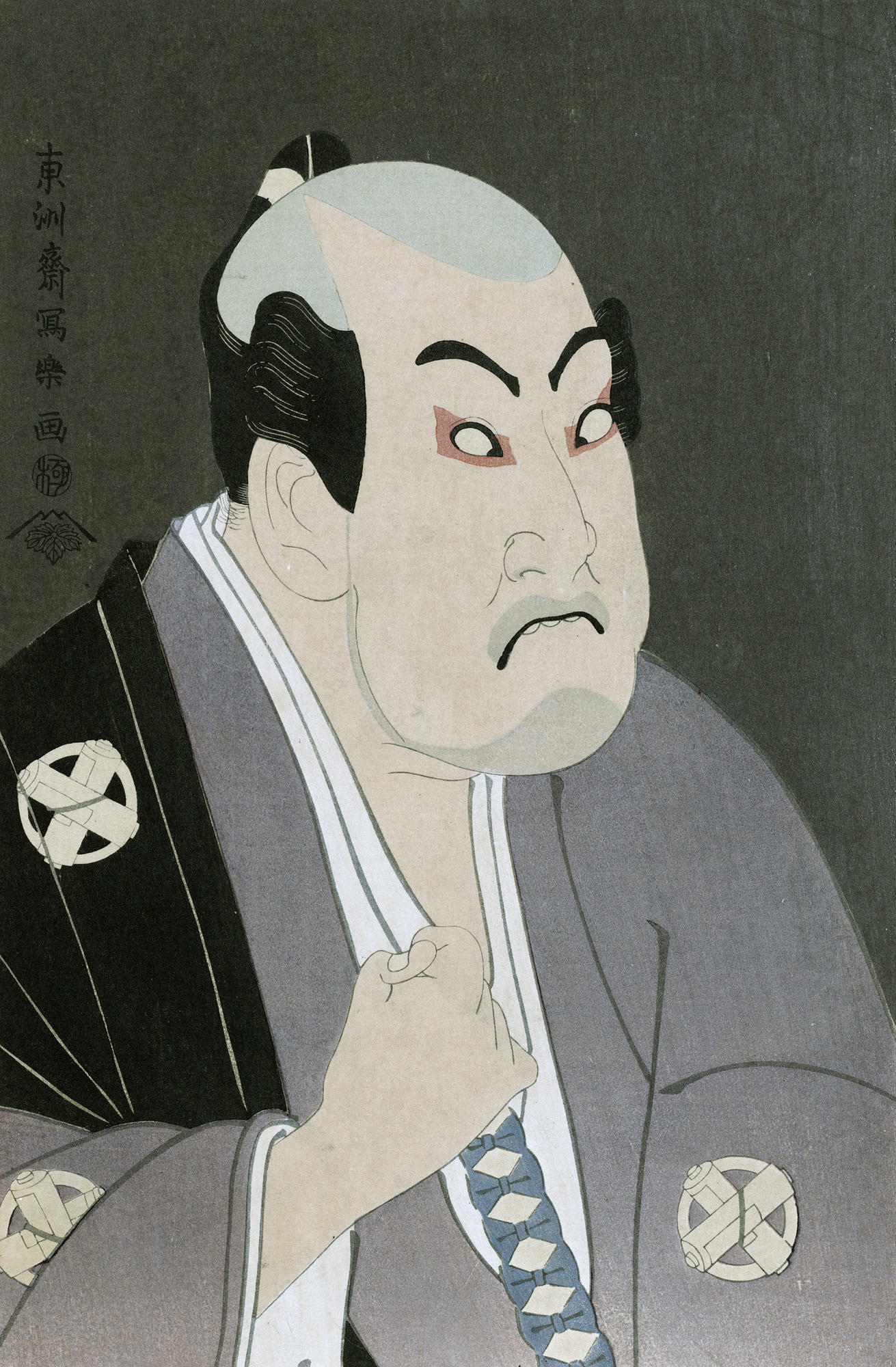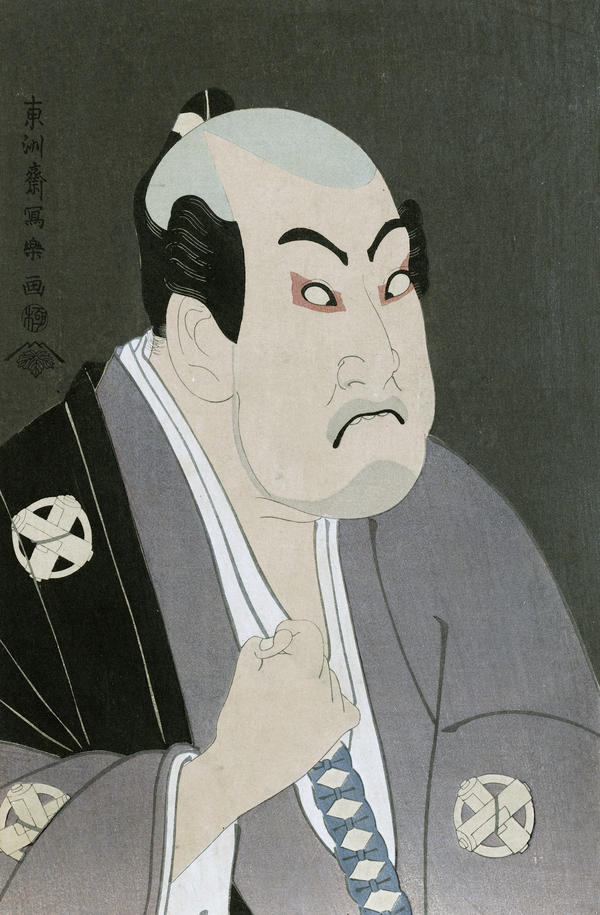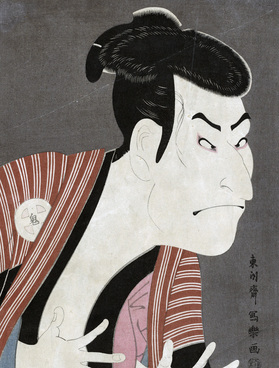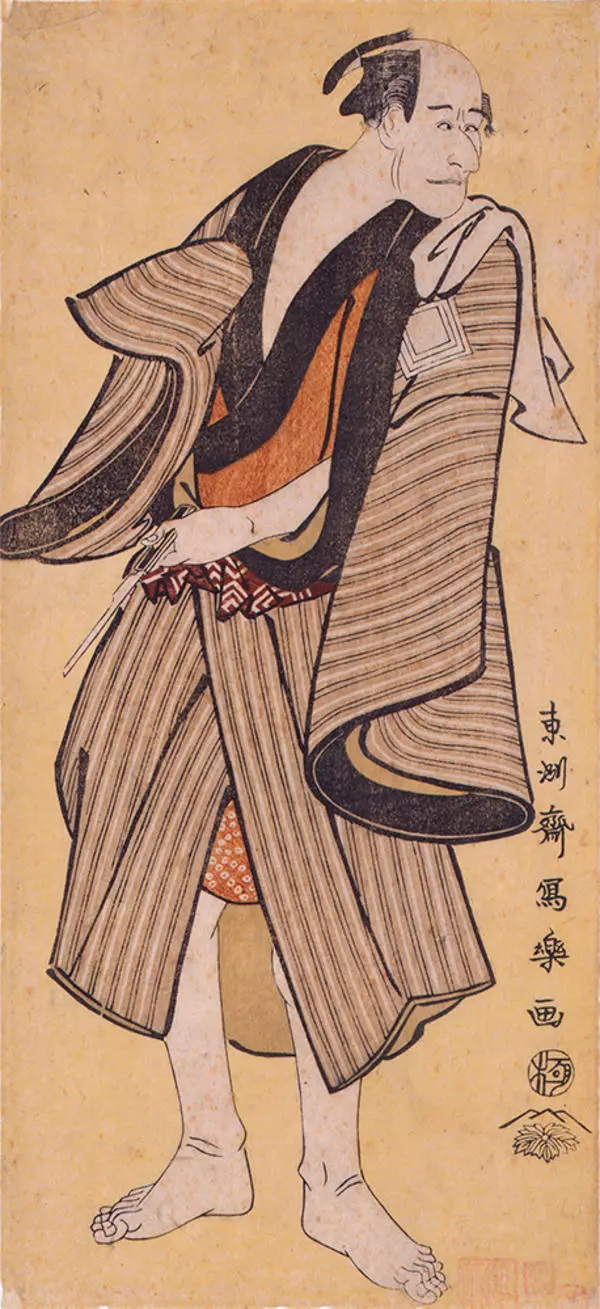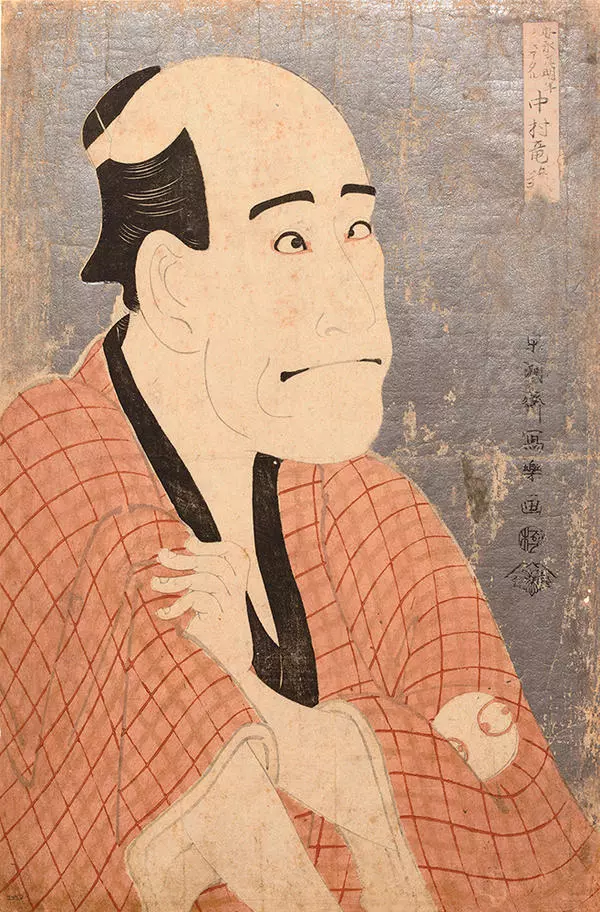The original color wood engraving The actor Tanimura Torazo as Washizuka Hachiheiji is known since 1794. A copy from Sergei Eisenstein’s collection attributed as a 20th century re-engraving and is now kept in the Pushkin State Museum of Fine Arts.
The figure of ToshusAi SharAku remains a mystery even for the researchers. He appeared out of nowhere in 1794 with his portraits of KabUki actors, became famous at once and disappeared without a trace in 1795. According to a German art historian Julius Kurt, who made Sharaku famous in Europe by comparing him with the Dutch artist REmbrandt, the master was an actor of the Noh Theater, because the faces on the portraits often resemble the masks of this ancient Japanese theater. According to another hypothesis, behind the name of Toshusai Sharaku was used by Katsushika Hokusai, who had created over a hundred portraits of actors just before 1794. Hokusai liked to change names, so he may have taken a new pseudonym to separate grotesque portraits from his work in a different style. Whoever was hiding behind the name of Sharaku, the artist remained in the history of world art, like other great masters of ukiyo-e (Japanese graphics), such as Kitagawa Utamaro, Utagawa Hiroshige, Utagawa Kunisada and Katsusjika Hokusai.
Sharaku was one of the most accurate observers of the Kabuki acting. His engravings show how the characters of classical and new drama were represented on stage in the old days, as well as the costumes, makeup, gestures and facial expressions of the actors, and allow to capture the atmosphere of the early Japanese performances.
Eisenstein was known for his sense of humor, grotesque and parody. He mastered the skill to convey the movement in a drawing with a clean line. He was also observant and had the ability to distinguish the generalizing, typical characteristics in a person’s face. That is why Sergei Eisenstein found Julius Kurt’s book Sharaku (now kept in the Film Museum) and studied it carefully. Portraits by Sharaku became Eisenstein’s favorite example of expression in his theoretical works and lectures at the Stage Management department at the All-Russian State Institute of Cinematograph.
The figure of ToshusAi SharAku remains a mystery even for the researchers. He appeared out of nowhere in 1794 with his portraits of KabUki actors, became famous at once and disappeared without a trace in 1795. According to a German art historian Julius Kurt, who made Sharaku famous in Europe by comparing him with the Dutch artist REmbrandt, the master was an actor of the Noh Theater, because the faces on the portraits often resemble the masks of this ancient Japanese theater. According to another hypothesis, behind the name of Toshusai Sharaku was used by Katsushika Hokusai, who had created over a hundred portraits of actors just before 1794. Hokusai liked to change names, so he may have taken a new pseudonym to separate grotesque portraits from his work in a different style. Whoever was hiding behind the name of Sharaku, the artist remained in the history of world art, like other great masters of ukiyo-e (Japanese graphics), such as Kitagawa Utamaro, Utagawa Hiroshige, Utagawa Kunisada and Katsusjika Hokusai.
Sharaku was one of the most accurate observers of the Kabuki acting. His engravings show how the characters of classical and new drama were represented on stage in the old days, as well as the costumes, makeup, gestures and facial expressions of the actors, and allow to capture the atmosphere of the early Japanese performances.
Eisenstein was known for his sense of humor, grotesque and parody. He mastered the skill to convey the movement in a drawing with a clean line. He was also observant and had the ability to distinguish the generalizing, typical characteristics in a person’s face. That is why Sergei Eisenstein found Julius Kurt’s book Sharaku (now kept in the Film Museum) and studied it carefully. Portraits by Sharaku became Eisenstein’s favorite example of expression in his theoretical works and lectures at the Stage Management department at the All-Russian State Institute of Cinematograph.
